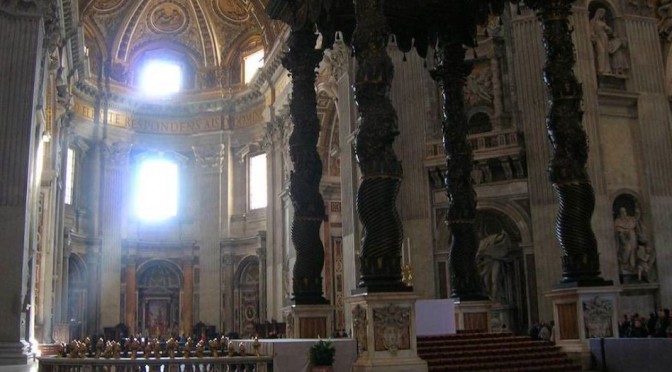In the years after Christ”s death, it was by no means certain that the Church of Rome’s version of Jesus message would dominate.
Cathars could not understand how any one could espouse a faith which was so obsessed with the nonsensical mental gymnastics surrounding the Nature of God and Virgin Birth. At one stage this included a teaching the Jesus was conceived or even born through his mothers ear.
What they did know was that the Church of Rome had convinced those searching for power and influence that the Pope had the authority to approve or disapprove of kings, in effect to decide who had the right to rule.
Secondly that the church was using the concept of the sacraments to exert control and extract wealth from every corner at every level of society, The Cathars resented the Sacraments and the way they were being used,in particular the sacrament of marriage,
Sacraments were supposed to bring “Grace” a means to achieve salvation but they were being used in a vastly different way.
Baptism
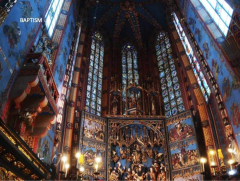 Initially baptism was regarded as elevating the recipient to a higher state.
The practice of using Baptism as an entry to christianity was a invention of The Church of Rome, initially intended to identify those who refused baptism, but then as condition for the church's approval for any position of temporal power.
Initially baptism was regarded as elevating the recipient to a higher state.
The practice of using Baptism as an entry to christianity was a invention of The Church of Rome, initially intended to identify those who refused baptism, but then as condition for the church's approval for any position of temporal power.
The Church of Rome survived the break up of the Roman empire by becoming involved in material wealth and power.
In 410 AD Alans, Vandals, Sueves and Goths roamed freely through the Empire and the Huns followed them.
Syagrius the Roman Governor of North Western Gaul gathered British support and set about stabilising his territory under Roman rule.
Syagrius was rejected as a potential King by the Pope because he was a member of the Celtic Church, which followed Cathar beliefs. Instead the Pope chose Clovis, teenage leader of the Franks, a Germanic tribe who inhabited the wetlands on both sides of the English Channel and who for centuries had controlled shipping in the channel through a mixture of negotiated contracts and piracy. Clovis was also a Celtic Christian but was prepared to accept conversion in return for appointment as the Popes champion. Clovis attacked and defeated Syagrius.
With great ceremony Clovis and thousands of his tribe were baptised. The use of baptism was a masterstroke. It underlined the new king’s subservience to the Pope. Up until this time baptism had been used exactly as it had been in the Jewish faith as a cleansing ritual, often only performed later in life. Now however it was used as an entry point to Christianity. No ruler would be accepted who had not been baptised, and it could only be administered by a priest of the Church of Rome!
Clovis gave the church the right to establish bishoprics and churches throughout the lands governed by the Franks. Soon this included the Cathar Heartland as Clovis defeated the Visigoths and moved south as far as the Pyrenees. At first the Cathars simply ignored the interlopers. They disapproved of the wealth devoted to church building and the tithes imposed on them by the church they had no interest in. They also disapproved of the increasingly complex ceremonials introduced by the Church of Rome which they had the opportunity to observe at close quarters.
However The Church of Rome now moved to coerce ordinary people to submit to its teaching. Baptism became a point of differentiation. For Roman Christians baptism was administered to the newborn.
This was introduced in association with the concept of original sin, which stipulated that every new born child was considered to be guilty of until baptized. Without baptism the child would be condemned to hell. Baptism was required to be performed in public and in the presence of a priest. A certificate of baptism and church records gave lasting proof of the baptism ceremony.
Through this simple device the Roman Church now knew who was their own. More importantly data was gathered on who was not a Roman Christian. High concentrations of heretics could now be pinpointed. Cathars were unconcerned. Original sin and its implications were meaningless to them. They believed they were already in hell and trying to escape!
The Mass
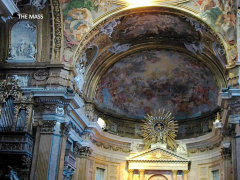 The " mass" was not part of the functioning of the early church.
It was six hundred years before attendance was made compulsory. This was the first attempt by the church to "know it's own" And to collect money from everyone who attended.
The " mass" was not part of the functioning of the early church.
It was six hundred years before attendance was made compulsory. This was the first attempt by the church to "know it's own" And to collect money from everyone who attended.
The ” mass” was not part of the functioning of the early church.
In the Early Church the major social function Agape (Literal translation – Love feast!!) was held in the homes of the faithful. It allowed believers to meet each other for social as well as religious reasons.
After churches were built (from 300 AD onwards} the Agape was held in the churches. In 360 however it was forbidden to set up tables within churches.
The magnificent churches became the palaces of the clergy but the involvement of parishoners was informal. Slowly the nature of Christian societies changed.
In 604 the structure of “THE MASS” was formalised. It was made compulsory for the members of the Church of Rome to attend Mass weekly under pain of mortal sin and consignment to hell. The main purpose of the formalisation of church services was to facilitate increased income though “collections”, usually two in the course of each mass.
It also meant that it was possible through the sermon to reach every member of the church with guidance on the Churches attitude on everything from local issues to matters of state.
The dissemination of papal missives became an industry in itself with streams of messengers carring the word of god to every bishopric and from there to individual parishes. The public nature of the sermons meant that papal appointees could indentify any priests who did not strictly conform to centrally promulgated beliefs and political opinions.
The Church of Rome was now able to “know it’s own”. the money collected was the foundation for great material wealth.
The Eucharist
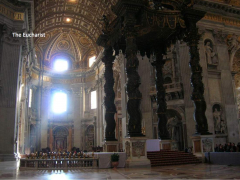 In the early church the breaking of bread had been a symbolic gesture “In Memoriam” of the last supper. New liturgy was developed. The centre piece of the Mass became the mystery of the conversion of bread and wine into the body and blood of Jesus Christ.
In the early church the breaking of bread had been a symbolic gesture “In Memoriam” of the last supper. New liturgy was developed. The centre piece of the Mass became the mystery of the conversion of bread and wine into the body and blood of Jesus Christ.
In the early church the breaking of bread had been a symbolic gesture “In Memoriam” of the last supper. New liturgy was developed. The centre piece of the Mass became the mystery of the conversion of bread and wine into the body and blood of Jesus Christ.
At the end of mass the “body and blood” was distributed to the congregation. The receiving of bread to eat and wine to drink delivered “grace” to help believers live lives in accordance with the teachings of the Church. Grace was defined as the “free and unmerited favour of God”. This distribution was called THE EUCHARIST. It was stipulated that the faithful had receive the EUCHARIST (communion) once a year, again under pain of mortal sin.
The idea that the body and blood of God should be consumed, perhaps the ultimate cannibalism, was inconceivable to Cathars. Cathars did not believe that Jesus was god they did not believe that bread and wine could be converted to the body and blood of Jesus, but members of the Roman church did, so why make them do this?
The eucharist was invented to increase attendances at mass and to create a product which could be sold to congregations in return for monetary offerings.
Confession
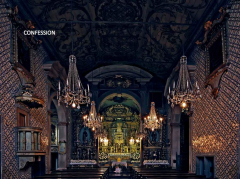
The church of rome had another motive a. There was a condition attached to the Eucharist. The recipient of the Eucharist had to be in a “State of Grace” before receiving communion. This demanded that there should be no unforgiven sins committed by the recipient. There were two ways to obtain forgiveness of sins. A general indulgence for good works such as donating large sums of money to the Church’s treasury or by attending confession.
Again the Cathars were nonplussed. Members of the Church of Rome believed that Jesus died for reparation of our sins so why was this second intervention by a priest of the Church of Rome necessary?
The reason of course had nothing to do with forgiveness but with forcing compliance to the churches teaching. As an example The Church of Rome taught that any pleasure for contact with another human being that was not specifically part of the procreation of children was sinful. Not just sinful but a mortal sin, unless forgiven it would condemn both participants in the pleasurable act to hell.
Forcing the participants to confession had two important effects. The participants were forced to make a self assessment of their compliance with the concepts of sin imposed by the church. Such self assessments which would inevitably be more severe than any imposed judgement could ever be. The act of confession created a sense of guilt and increased dependence on the Church. this dependence extended to every level of society, even kings.
Additionally priests hearing confession were given a good appreciation of the effectiveness of their own message.
Confirmation
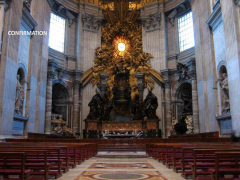 One of the results of the analysis of the confessional disclosures was that there were wide miscomprehensions about the true severity of the Church’s teaching. The sacrament of Confirmation was introduced to ensure that there could be a record of adults who had “confirmed their faith” but perhaps more meaningfully those who had not. The preparation for confirmation was a rigorous study of the mandatory aspects of the beliefs of the Roman Church. This was nothing less than indoctrination.
The Jesuits were eventually to say " give us a child before the age of Seven and he will be ours for life" One of the results of the analysis of the confessional disclosures was that there were widely differing interpretations of Christ’s message.
One of the results of the analysis of the confessional disclosures was that there were wide miscomprehensions about the true severity of the Church’s teaching. The sacrament of Confirmation was introduced to ensure that there could be a record of adults who had “confirmed their faith” but perhaps more meaningfully those who had not. The preparation for confirmation was a rigorous study of the mandatory aspects of the beliefs of the Roman Church. This was nothing less than indoctrination.
The Jesuits were eventually to say " give us a child before the age of Seven and he will be ours for life" One of the results of the analysis of the confessional disclosures was that there were widely differing interpretations of Christ’s message.
The sacrament of Confirmation was introduced to ensure that there could be a record of adults who had “confirmed their faith” but perhaps more meaningfully those who had not. The preparation for confirmation was a rigorous study of the mandatory aspects of the beliefs of the Roman Church. This was nothing less than indoctrination.
Cathars knew that these “Sacraments’ were being used to put increasing moralistic pressure on members of the church and other Christians. It also enabled the church to identify and act against those who did not accept its teaching.
The Jesuits were eventually to say ” give us a child before the age of Seven and he will be ours for life”
Extreme Unction
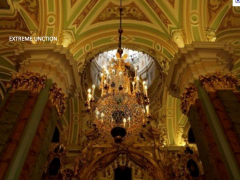 One of the conditions for the approval of Kingship was the enforcement of church tithes (10% of income) This was additional to any revenue raising the state might impose.
One of the conditions for the approval of Kingship was the enforcement of church tithes (10% of income) This was additional to any revenue raising the state might impose.
There then followed a period of conflict with the local landowners and a fight for control of the processes of law. Land was transferred in ways which specifically prevented the church knowing how the tithes should be applied.
The outcome of this conflict was that the church took control over the administration of probate. By then instituting the sacrament of extreme unction ( last rights) by which all sins were forgiven and entry into paradise was guaranteed, the Church gained better knowledge about who had died and therefore knew when to institute probate procedures. They were close to control of the distribution of wealth.
Marriage
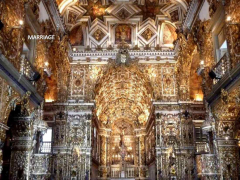 However there was still one area which could be used to enforce overall control- marriage!
However there was still one area which could be used to enforce overall control- marriage!
Marriage in 1150 was still considered a civil contract, negotiated primarily between the parents of the prospective partners. It was as much about the ambitions of the parents as it was about setting up the young couple for a successful life. Thus wealth could still be moved without the Church’s knowledge.
Even the Roman Church at this time believed that all that was necessary to constitute a marriage was a contract and consummation. Early leaders of the church opined that chastity was a higher calling than marriage but for those who desired sexual pleasure, marriage was an acceptable alternative. As time passed, this view softened. It was now taught that marriage between two Roman Christians in which they both willingly joined was a holy sacrament, carrying with it a gift of god’s grace. It was a sacrament where the celebrants were the two participants in the act of intercourse. Because of the gift of grace, after intercourse the bond was indissolvable. At this stage there was still no attempt to involve the priesthood in marriage ceremonies, nor was there any attempt to get involved in the civil contract.
When the church decided to get control of this last part of the jigsaw their first attempt was to appeal to the emotions. They laid down rules, which said that the grace was only available to those who willingly joined in the consummation and that their choice should be made without regard for the preferences of their parents. This had the effect of making those contemplating marriage seek the assistance of the church if they wished to marry against the wishes of their parents.
At the height of the Albigensian crusade in 1215 the Roman Church changed its attitude yet again. From that point on the grace was only awarded at a ceremony presided over by a priest. Without the ceremony there could be no marriage, no civil contract, no inheritance. The church had made the final move in gaining control of the distribution of wealth. The next step was to introduce laws of prohibiting marriage for reasons of consanguinity( blood relationships), affinity( extended family relationships) and spiritual relationship ( god children and families of god children) were introduced. The laws were so restrictive that virtually everyone had to seek the approval of the church for the legality of their marriage.
Significantly the rules were never totally documented and the church allowed learned discussion about the degree of relationship which was forbidden. Dispensations, including the marriage of first cousins could be granted at the discretion of the church. This was seen by the Cathars for what it was, a grab for power. The Church of Rome now had control not only of the right to rule, but also of the formation of alliances and the accumulation of wealth at every level in society.
The Cathars were absolutely opposed to this. Because of generations of intermarrying, the rules meant that virtually no one from a Cathar family could marry anyone else from a Cathar family.
They rationalized their opposition by restating the earlier belief that marriage was totally concerned with inheritance, inheritance was concerned totally with the devil’s realm and therefore no concern of the church. In the Cathar argument, spiritual union and the accompanying sexual pleasure was considered a higher calling than marriage.
If there was grace to be gained from sexual fulfillment it lay in these spiritual unions not in contractural marriage. There were other points of difference. In Cathar beliefs spiritual union was totally under the control of women. The Roman church had always preached that the wife must subjugate herself to her husband, now they were a step closer to enforcing that teaching!
Holy Orders
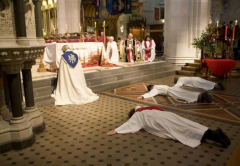
Finally the Church of Rome introduced the concept of seminaries and the sacrament of holy orders. until well into the middle ages it was possible for a local lords to appoint the bishop to the diocese which co-incided with their own landholding.
By insisting that such appointments be made only to those who have recieved holy orders and therefore have attended a seminary , the church avoided any possibility of infiltration by anyone who might depart from the central dogma.
In this way any progressive ideas can be eliminated before they start; it is the lynch pin by which all the other sacraments can achieve their objectives.
The Triumph
From all this it can be seen that it was perfectly rational for the Cathars to be fundamentally opposed to all the “sacraments” of the Roman Church. They were more fundamentally opposed to the Roman version of the Eucharist than any other sacrament. It involved giving god’s blessing to bread, which belonged to the material world and was therefore part of the devil’s realm, and assumption that this then became the body of god. In the eyes of the cathars this was obscenely blasphemous. They could not understand let alone take part in such a practice! The sacrament of marriage which had been used against them as a tool of genocide was equally hated. They saw all “sacraments for what they were tools to gain control of the total populace.
Sadly for them the whole structure of deceit was supremely successful – the triumph of the Roman Church.
